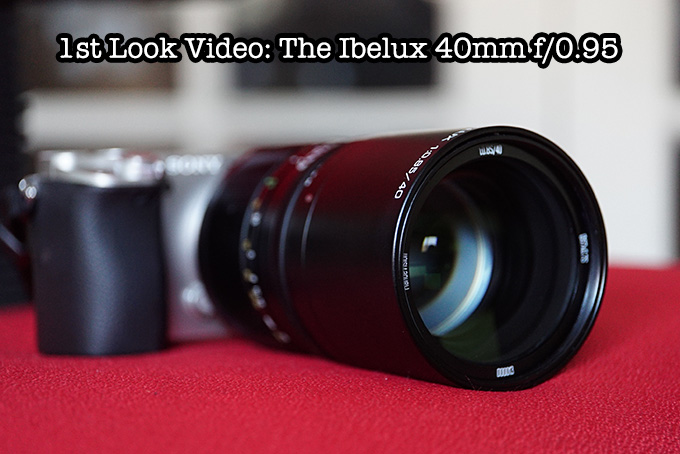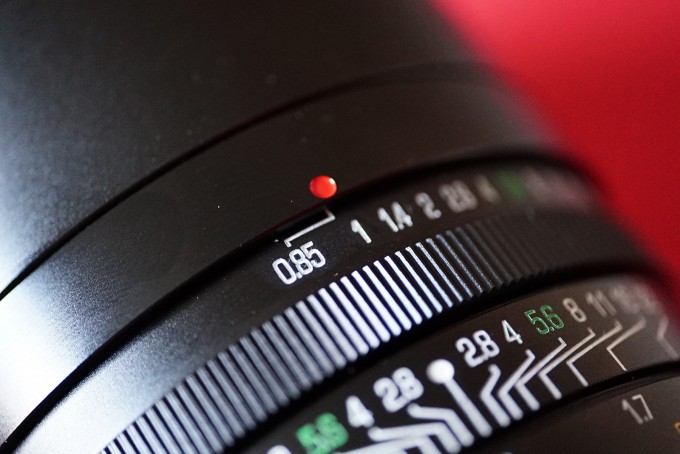The IBELUX 40mm f/0.85 Lens. World’s Shortest Review
The new Ibelux lens has arrived to me for a quick review and I have shot a few frames with it since the video below was made and have to say I do not find it worth the $2300 asking price, and I know this just from my 1st couple of uses. I have found the lens to be much too large, much too heavy and a bit soft when wide open, which means I would not use it wide open. I feel it was made for the f/0.85 aperture so it can be presented as one of the worlds fastest lenses over anything else BUT it lacks sharpness as well as character.
Being an APS-C lens (not full frame) it just seems a bit too “much” in everything from weight, size and price.
Also, was shooting with it and went to twist out the Leica copy slide out hood and it just fell off, during my 1st use with the lens (it is not supposed to come off). This does not inspire confidence in build IMO. The shots I have taken also lack any kind of special character IMO. By f/1.4-f/2 its sharpens up but at this price there are MUCH better lenses to be had. For example, a Zeiss 50 Planar at $800 or a Zeiss ZM 50 1.5 Sonnar for $1100 or even better a real Leica 50 Summicron f/2 which will be sharper at f/2 than this lens at about 1/7th the size. The Zeiss Touit 50 f/2.8 is STUNNING in sharpness, colors, 3D pop and comes in at $999 and is MUCH smaller and lighter. Sure it is not an f/0.85 lens but my professional opinion is that this lens was made to be 0.85 for marketing reasons, not performance reasons.
This lens also has an issue on the Sony A6000 as there is banding when using it at any ISO. I have shot with MANY if not ALL uber fast lenses and this one has left me the most disappointed.
Below is the lens on the A6000 at f/1 – click to see 100% crop and banding.
Long story short, I will not be doing a full review of this lens because it is something I would never recommend due to the cost, size, the fact that it is APS-C only, the heavy weight and underwhelming performance when shot wide open, which is what the main draw to the lens is. Also the fact that on the A6000 Sony it has a banding issue as well as construction concerns. I would recommend a Zeiss ZM lens any day over this for less money and better performance. Usually I would not write anything, I would have just passed on it but many have asked me to start to write about the things I use and DO NOT like as well, so here you go 🙂
It seems like they concentrated on packaging and making the lens look like a uber large Leica lens, with Leica style case and all to give the appearance of high quality. They also made a point to say “Designed in Germany” yet the lens is made in China.
One more thing..the lens is VERY long as you can see in the image at the top of the screen.
If the lens was $899 it would be a different story but at $2079.00, for me, it is a no go.
Below is my 1st look video before I even shot with the lens..when I was more optimistic about it.
You can read more on this lens at B&H Photo HERE.
If you do not mind a large size and weight then you may actually dig this lens, but be warned..it’s HEAVY!






I know this is an old review. I see it is $799 in m4/3 mount. Would that be worth it or better to look else where?
Just as good? Isnt Mitakon much better lens than this one? And, since this comment is several months late, do you think it is worth its current price ($1200)?
Probably not. I have this banding problem (but is it banding?) with many lenses on the a6000. I tested those lenses on the 5N and 6 and the problem disappeared!
Hi Steve,
Short but loud and clear!
As to the banding you mention: I have that problem with many lenses on the a6000. I’m not sure it is banding. I see this pattern of horizontal lines/stripes especially in fairly monochrome areas like skies.
Straight OoC the problem is not very prominent but when you add contrast and clarity these lines become very visible.
I’ve heard that the a77 II has the same issue.It looks like a flaw n the new 24mp sensors
I’ve written to Sony about this but have not ad an answer so far..
Akis, I agree with you completely.
indeed a typo in the upper image.
I think the banding issue is not unique to this lens. I have an A6000 that I’m returning since both my FD 50 1.2L lens and 55 1.2 lens will do this wide open.
Also, regarding the Speedbooster, my exposure values were the same for my 1.2 lenses with and without the speed booster. I’m curious if I just got a bad copy of others were experiencing similar issues with fast glass.
He means the caption you wrote on the top image of the review. There is a typo there.
Not sure what image you are looking at…but the one of the lens clearly shows 0.85
in the image says f0.95 instead of f0.85 thanks for the review Steve!
So what your saying is I should buy this lens:)
No but there is much smaller f/1 lenses, and smaller f/0.95 lenses for under a grand (also made in China) that perform just as well as this one does.
wonder if there is banding if mounted on a 16Mp APS-C variant like the NEX 6 or NEX 5N?
did you have problems with sample variation of the 50 Summilux asph or just speculating?
An even shorter review would be : “IBELUX 40mm f/0.85. Expensive paperweight.”
Delusional to think there’s a cheap way to getting faster than ƒ/1. Especially from the quality-conscious Peeplz Republik. Don’t care if it was designed in Germany…
An interesting comparison :
http://admiringlight.com/blog/ibelux-40mm-f0-85-vs-canon-fl-55mm-f1-2speed-booster/
Long story short, based on this test, you’ve got almost the same focal length and aperture, a better quality, cheaper and smaller lense by using an old canon 55 1.2 with a speed booster than with the Ibelux.
It seems that some Lens are better used as Jewelry or Status Symbols rather than working Tools for serious photographers. Bokeh has become a Crutch for squeezing something out of hum-drum photographs. With many of the digital camera bodies available, you can crank up your ISO and easily achieve consistent and beautiful results at F/2.8 and above. The current and trendy obsession with bokeh is waning and the content and views of the images are again becoming the major focus of important photographic activity. Many Great Photographers would not spend this type of money on their camera body and are still very able to crank out top notch work!
Thats exactly the reason I use Leica glass.
I remember how bad and how expensive the first black and white TVs were . . . but now, every home has two or more – in colour no less! So one day we may well look back at the Ibelux and quietly laugh as no doubt, we’ll all be using one version or another of it’s descendants.
Maybe you got a bad copy? Perhaps this lens suffers from sample variance like the 50 summilux asph.
Uh, Steve, those things aren’t called “banding,” they’re called “wrinkles”… 🙂
No, seriously, I see what you mean about the banding. Odd how banding has suddenly become a thing. I had to get rid of my 20mm f/1.7 Panasonic Micro Four Thirds lens because it produced banding on my Olympus E-M 5 camera, even though it didn’t do it on my Panasonic cameras… and even though other users were sure their examples didn’t produce banding with their Olympus cameras either. With the Panasonic lens some armchair engineers blamed it on electrical noise from the AF motor, but obviously that can’t be a factor with the manual-focus Ibelux. Wonder what’s really going on…?
yikes, that bad huh? well, they can’t all be winners 😉
Thanks but no thanks. (Not quite the world’s shortest response. 😉 )